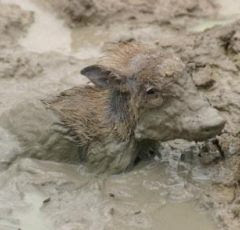5.21.2012
Keep the Peace - Stop the Site C Dam
The Site C Dam Project is undergoing a joint environmental assessment (EA) review by the federal and provincial governments. Written comments can be mailed or submitted online and will be accepted until June 1st. Click Here to 'Have Your Say'
The Peace River Valley, in the northeast corner of British Columbia, is home to Treaty 8 First Nations’ hunting, fishing, and trapping grounds, old growth boreal forests, and is one of the most important wildlife corridors in the Yellowstone to Yukon migration corridor chain. In addition the land that would be flooded by the damn dam is the best agricultural land in northern BC, with the only class one soil north of Quesnel.
BC Hydro says it is because we need the energy, but we don’t, their own reports say we can meet demands through energy conservation. Site C is not about meeting the electricity demands of British Columbians; it is about exporting electricity (for air conditioners in California) and expanding BC’s gas and mining industries. "Site C and B.C.'s proposed LNG development go hand in hand", according to Premier Christy Clark, "The newly approved licence for Shell to export liquefied natural gas out of Kitimat will use 100 per cent of the power Site C would create. We cannot create this new industry in British Columbia, by adding value to natural gas, without the power that would come from Site C."
Site C fails to meet minimum international standards for large dam construction. Although the BC government is presenting the $8 billion hydro project as a "clean energy project", Site C would increase annual greenhouse gas emissions in British Columbia by almost 150,000 tonnes. The project's carbon footprint derives from construction emissions, from emissions created by the flooded boreal forest as it decays and will block the natural sequestration of atmospheric carbon dioxide that would have occurred over that huge area.
The ongoing environmental assessment (EA) review hearings by the federal and provincial governments are only being held in the area near the proposed dam's site. Those opposing the damn thing say its undemocratic and foolish that B.C. Hydro isn’t holding public meetings provincewide considering that First Nations in the territory around the dam site are united in their opposition to the dam, as are the people who live in the valley that will be flooded—the farmers and the ranchers and such. Opponents believe that certainly southern cities, who will be asked to foot the bill for this thing, should be brought into it the public consultations. Site C would require the largest single deletion of agricultural land in the province’s history—over 5,000 acres of prime agricultural land pulled out of the ALR [Agricultural Land Reserve].
Have Your Say on the Proposed Site C Dam



